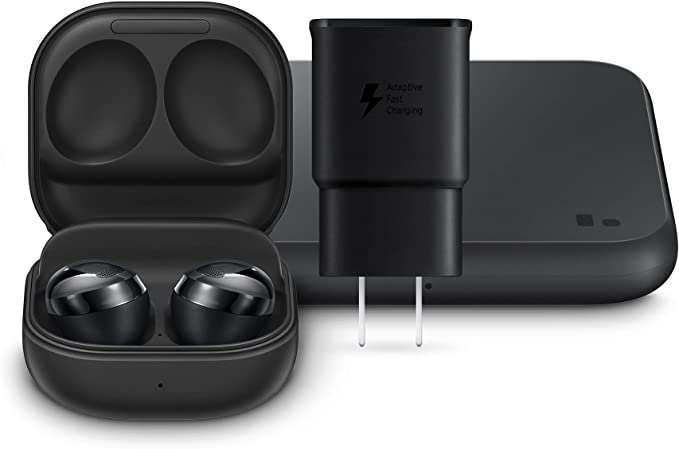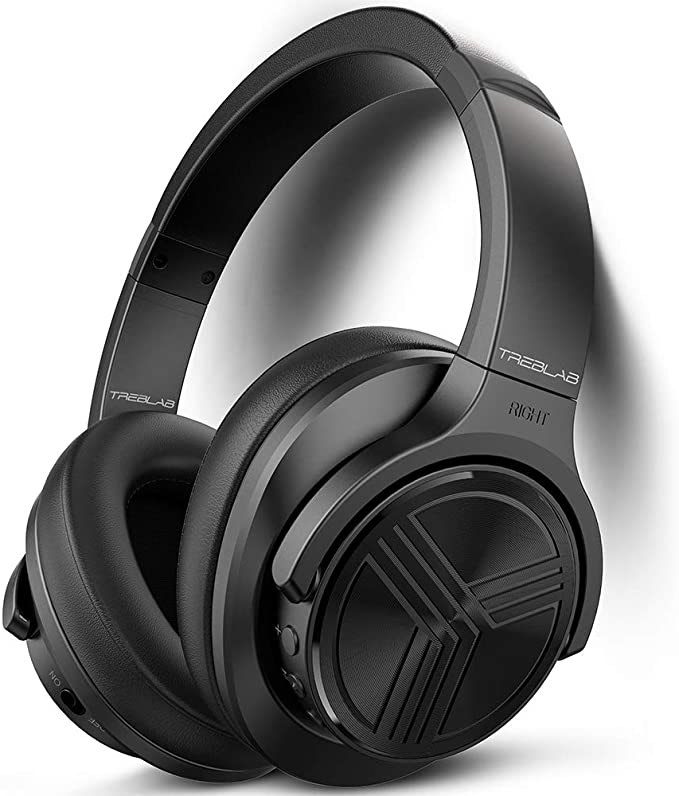Generic H-11 RGB ESB High Precision 44mm Driver RGB Headphones
Update on July 3, 2025, 5:03 p.m.
The world of sound is a fascinating landscape, constantly shaped by the innovations of engineering and acoustics. From the subtle rustle of leaves in a nature documentary to the explosive roar of a dragon in a video game, our headphones act as personal gateways to these auditory experiences. Yet, how often do we pause to consider the intricate science hidden beneath the sleek designs and vibrant lights? Let’s embark on a journey to unravel the core technologies that define modern headphones, using a versatile model like the Generic H-11 RGB ESB High Precision Headphones as our conceptual blueprint, not for a product review, but as a fascinating case study in practical physics and ingenious design.

The Architects of Sound: Decoding Driver Dynamics
At the very heart of any headphone’s ability to create sound is its audio driver. Think of it as a miniature loudspeaker, meticulously engineered to convert electrical signals into the sound waves our ears can perceive. The Generic H-11, for instance, boasts 44mm neodymium drivers. What does this mean for your ears?
In essence, a larger driver, like this 44mm unit, generally has the capacity to move a greater volume of air. This physical ability is a key factor in achieving a robust bass response and a broader dynamic range, allowing for a richer, more “vivid sound.” The magic truly happens through the interplay of three primary components within the driver: a permanent magnet, a voice coil, and a diaphragm. When an electrical audio signal flows through the voice coil, it generates a varying magnetic field. This field interacts with the permanent neodymium magnet (known for its powerful magnetic properties within a small, lightweight form factor), causing the coil and the attached diaphragm to vibrate rapidly. These vibrations are precisely what create the sound waves that travel to your ears. This process, rooted in the principles of electromagnetism, is a testament to how subtle mechanical movements can paint an entire auditory world.
The Art of Silence: Unveiling Active Noise Reduction
Have you ever wished you could simply switch off the distracting hum of an airplane engine or the chatter of a busy cafe? That’s precisely the promise of Active Noise Reduction (ANR), a technology increasingly common in modern headphones. The Generic H-11 incorporates “advanced active noise reduction technology,” which, at its core, is a sophisticated application of wave physics.
Here’s how it generally works: Tiny microphones embedded in the headphones act as vigilant sentinels, constantly listening to the ambient noise around you. This captured noise signal is then fed into a specialized digital signal processor (DSP). The clever part? This processor rapidly analyzes the incoming sound wave and generates an “anti-noise” signal – an identical sound wave, but precisely 180 degrees out of phase with the original noise. When these two waves meet, a phenomenon known as destructive interference occurs. Like two perfectly matched ripples on a pond cancelling each other out, the noise and the anti-noise wave effectively negate each other, leading to a significant reduction in perceived external sound.
This technology found its early significant applications in specialized headphones for pilots and factory workers, protecting them from constant, low-frequency machinery hums. While remarkably effective against consistent, low-pitched sounds, ANR typically has limitations with sudden, sharp noises or very high frequencies, as the system needs a fraction of a second to process and generate the anti-noise wave. Nevertheless, it transforms your listening environment into a quieter sanctuary, enhancing immersion in your audio.
The Dancers of Light: Exploring RGB Illumination
Beyond the auditory experience, modern headphones often engage another sense: sight. The “Vivid RGB Lighting” on the Generic H-11 headphones adds a dynamic visual flair. RGB stands for Red, Green, Blue, referring to the primary colors of light. The magic here lies in Light-Emitting Diodes (LEDs).
LEDs are semiconductor devices that emit light when an electric current passes through them – a phenomenon called electroluminescence. Unlike traditional incandescent bulbs that glow by heating a filament, LEDs produce light far more efficiently. The power of RGB lighting comes from combining these three primary colors. By precisely controlling the intensity of the red, green, and blue LEDs within each lighting zone, an astonishing spectrum of colors can be produced through additive color mixing. Imagine a digital canvas on your earcups, where a tiny microcontroller acts as an artist, blending light to create millions of potential hues. This visual element not only adds a customizable aesthetic, allowing users to match their headphones to their gaming setup or mood, but also visually signifies the active nature of the device, especially in low-light environments. It transforms a functional device into a statement piece.
The Blueprint for Comfort: The Science of Ergonomics
Hours of wear can turn even the best audio experience into a chore if a headset isn’t comfortable. This is where the principles of ergonomics and material science come into play. The Generic H-11 emphasizes comfort with its “retractable/adjustable headband” and “super soft ear cups,” along with a lightweight design of approximately 0.66 lbs (around 300 grams).
The retractable or adjustable headband is not just about fit; it’s about pressure distribution. By allowing users to precisely tailor the fit to their head size, the headband can distribute the headset’s weight more evenly across the top of the head, preventing uncomfortable pressure points. Think of it as adjusting the suspension on a vehicle for a smoother ride – the goal is to evenly dissipate load.
The super soft ear cups are crucial for both comfort and passive noise isolation. These cups are typically filled with plush, breathable foam (often memory foam or a similar cushioning material) and covered with a soft, skin-friendly material like protein leather or velour. This combination allows the ear cups to gently conform to the unique shape around your ears, creating a comfortable seal. This seal is not only pleasant but also forms a physical barrier that helps block out some external sound, a concept known as passive noise isolation. Furthermore, the lightweight construction significantly reduces the overall strain on your neck and head, allowing for longer, more enjoyable listening or gaming sessions without the usual fatigue.
The Clear Voice Bridge: Microphone Acoustics
In today’s interconnected world, clear communication is just as vital as clear audio. The Generic H-11 addresses this with its “360° rotatable mic.” The flexibility of a 360° rotatable microphone is an often-underestimated ergonomic feature. It allows users to position the microphone precisely where it’s most effective for voice pickup, regardless of their head shape or preference for having the mic on the left or right. When not needed, it can be seamlessly rotated out of the way, providing a cleaner look and preventing accidental bumps.
Beyond its physical flexibility, the mention of a “noise-canceling microphone” points to more advanced acoustic engineering. While distinct from the ANC for your listening, such microphones typically employ technologies to isolate your voice from ambient background noise. This can be achieved through various methods, such as directional pickup patterns (like a cardioid pattern that primarily captures sound from the front) or digital signal processing (DSP) algorithms. These algorithms analyze the incoming sound, identify noise components, and actively suppress them, ensuring that your voice cuts through clearly to teammates or conference participants, making communication more effective and less frustrating.
The Unwavering Connection: Wired Reliability and Intuitive Control
In an era dominated by wireless devices, the Generic H-11’s reliance on wired connectivity via a 3.5mm audio jack might seem old-fashioned, but it offers distinct advantages, particularly in performance-critical scenarios. The most significant benefit is latency – or rather, the lack thereof. A wired connection transmits audio signals virtually instantaneously, eliminating the delay that can sometimes plague wireless connections. For competitive gamers, this sub-millisecond responsiveness can be the difference between victory and defeat. Moreover, wired connections are inherently more stable, immune to wireless interference, and do not require battery power for audio transmission (though the RGB and ANR might still need power). This ensures a consistently reliable audio stream, crucial for critical in-game audio cues or uninterrupted music playback.
Adding to the user-friendly design are on-ear controls. These tactile buttons or dials, typically located on one of the ear cups, allow for quick and intuitive adjustments to volume, playback, and even call management without needing to reach for your connected device. This direct control enhances the fluid interaction with your audio. Lastly, the convenience of USB charging for the RGB and ANR features means you can easily power up the headset using common USB ports on computers or wall adapters, ensuring your enhanced audio features are always ready when you are.
Conclusion: The Symphony of Science in Your Headset
The Generic H-11 RGB ESB High Precision Headphones stand as a fascinating example of how diverse scientific and engineering principles converge within a single consumer device. From the intricate electromagnetism that powers its drivers to the precise wave interference that enables active noise reduction, the thoughtful ergonomics ensuring comfort, and the optical marvel of RGB lighting, each feature is a testament to human ingenuity.
This exploration reveals that even seemingly “generic” products embody a wealth of scientific knowledge, designed to enhance our daily lives. Understanding these underlying principles doesn’t just satisfy curiosity; it empowers us as consumers to appreciate the technology we use and make more informed choices. The next time you put on your headphones, perhaps you’ll hear not just your favorite track, but also the whispers of physics and the quiet hum of engineering excellence working in harmony.
What other everyday technologies do you find yourself curious about, and what scientific principles do you think lie hidden within them?



























































